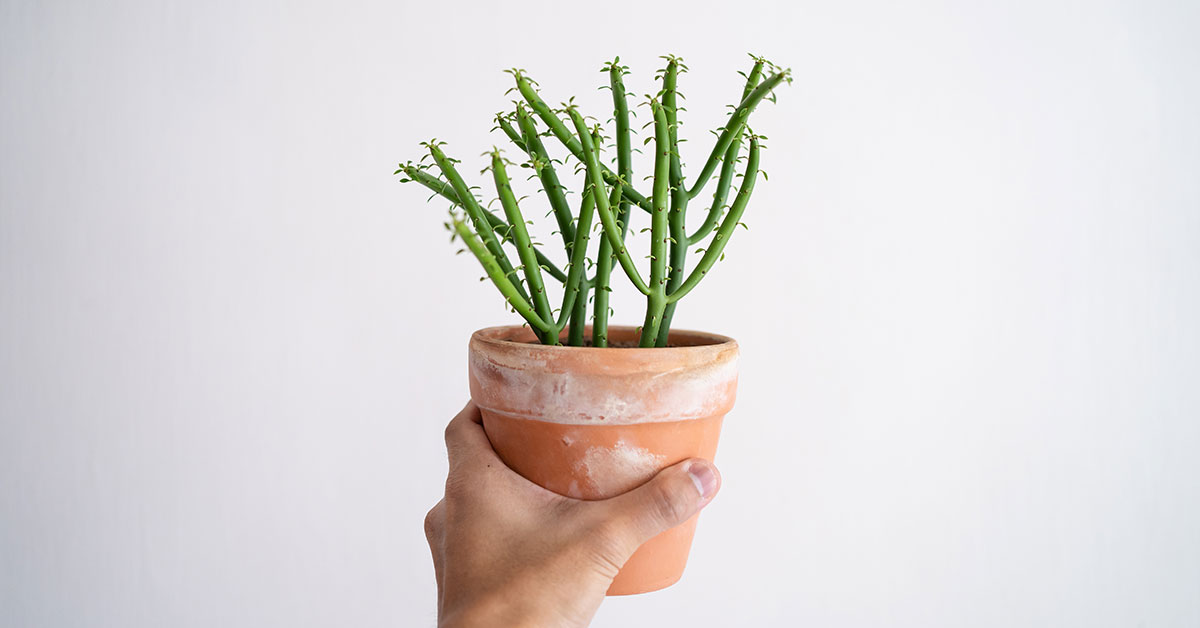Pencil cactus, (Euphorbia tirucalli), is an incredibly popular houseplant. It is easy to care for and propagate. Propagating pencil cactus is a great way to increase your collection and share it with friends and family. In this article, we will discuss the various methods of propagating pencil cactus, including stem cuttings, offsets, and seeds. We will also discuss how to care for the cactus after the propagating process. With the right knowledge and techniques, anyone can successfully propagate pencil cactus.
Should I Propagate My Pencil Cactus?
Pencil cactus is one of the most popular houseplants due to its attractive appearance, ease of care, and long-lasting nature. It is a low-maintenance plant that requires minimal watering and only occasional pruning. This makes it ideal for busy people who don’t have much time to devote to plant care. Additionally, pencil cactus has unique, spiny foliage that comes in a variety of colors. Making it a great addition to any home. It is also known for its air-purifying qualities, as it can help to remove toxins from the air inside your home. Finally, pencil cactus is a very long-lasting plant that can live up to 10 years.
Pencil cactus is best propagated in the late summer or early fall months when the weather is still warm and the days are still long. This is the time when the soil is still moist and the temperatures are ideal for rooting new cuttings. During this time, the cactus will also receive plenty of sunlight, which is essential for healthy growth. To ensure success, make sure to use clean, sharp tools to take cuttings and use fresh potting soil to provide a healthy environment for the new plants. With proper care and attention, pencil cactus can be successfully propagated in late summer and early fall.
How To Propagate Pencil Cactus
Pencil cactus is a succulent plant that can easily be propagated from cuttings. To propagate pencil cactus, start by selecting a healthy pencil cactus plant. Cut it at the base near the soil line with a sharp, sterile knife or pair of scissors. Place the cutting in a pot with well-draining soil and a drainage hole, and then cover the cutting with a thin layer of soil. Water the soil and place the pot in a warm spot that gets plenty of indirect sunlight. Keep the soil slightly moist and keep the pot in a warm location, and your pencil cactus cutting should start to root within a few weeks.
The right soil is key to the successful propagation of this plant. Choose a well-drained soil mix that is low in nutrients and has a coarse texture. The ideal soil mix should be a combination of equal parts perlite, sand, and potting soil. The medium should be light and airy to ensure proper drainage. Avoid soil that is too moist, as this can lead to root rot. For best results, water your pencil cactus lightly after planting, and make sure to keep the soil slightly moist throughout the propagation process.
Providing Aftercare
Pencil cacti are great plants for those just starting out in plant propagation, as they are very easy to care for. After propagating a pencil cactus, the most important thing to do is to provide it with proper aftercare. To ensure your pencil cactus thrives after propagating, make sure to place it in a bright, sunny spot and water it every one to two weeks. It’s important to ensure the soil is well-draining, so you should use a fast-draining potting mix and avoid overwatering. Fertilize your pencil cactus every month with a balanced fertilizer to promote healthy growth. Finally, it’s important to protect your pencil cactus from extreme temperatures, so make sure to keep it away from drafts or direct heat sources.
Pencil cacti can be sensitive to watering after propagation. Overwatering or underwatering can cause them to suffer from root rot, wilting, and poor growth. When propagating a pencil cactus, it is important to provide it with just enough water to keep the soil lightly moist, but not soggy. Too much water can cause the roots to rot, and too little water can cause the pencil cactus to shrivel and die. During the growing season, the soil should be checked periodically. This will help ensure that it is not too dry, and water should be added as needed. If the soil is consistently too moist, then it may be necessary to add a drainage layer of sand or gravel to the pot to help keep the soil from becoming overly saturated.
Monitor For Pests And Diseases
Pencil cacti can suffer from pests and diseases that can cause considerable damage. Common pests that can attack pencil cacti include mealybugs, aphids, and scale insects, which can all cause discoloration of the plant and lead to stunted growth. Diseases that can affect pencil cacti include root rot, which can be caused by overwatering, and powdery mildew, which is a fungal infection that can cause yellow patches on the leaves. Treatments for pests and diseases include insecticidal soaps and neem oil, as well as pruning and repotting to encourage healthy growth.
To prune pencil cactus, use clean, sharp pruning shears to cut off any dead or discolored stems and any stems that are longer than desired. Then, cut off any stems that are crossing or growing in an awkward direction. Lastly, shape the plant by trimming off any excess growth. It is important to avoid pruning too aggressively, as pencil cacti can become stressed and health can suffer.













